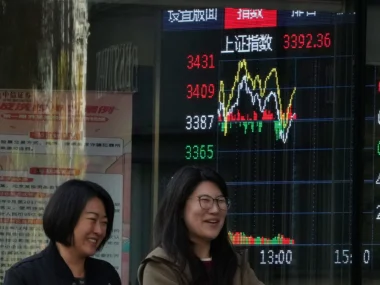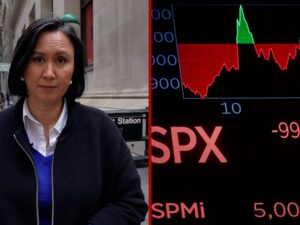The International Monetary Fund (IMF) has upgraded its forecast for the US economy’s performance, predicting it to grow by 2.7% this year, which is 0.6 percentage points higher than its previous January projection. This highlights the US as a significant driver of global growth in 2024. However, the robust performance of the US economy may pose challenges in addressing inflation issues.
In contrast, the European economy, which has struggled to recover momentum post-pandemic, faces challenges such as high interest rates and lingering effects from earlier increases in energy costs. The IMF expects the 20 eurozone countries to grow by just 0.8% this year, a slight downgrade from its January forecast.
Globally, the IMF anticipates a 3.2% expansion, slightly higher than its previous prediction in January. China’s economy, the world’s second-largest, is forecasted to grow by 4.6%, while India is expected to achieve growth of 6.8%.
“The recent strong performance of the United States reflects robust productivity and employment growth, along with strong demand in an economy that remains overheated,” stated IMF chief economist Pierre-Olivier Gourinchas in a blog post accompanying the agency’s World Economic Outlook. “This calls for a cautious and gradual approach to monetary easing by the Federal Reserve.”
Gourinchas added in the report’s foreword, “Astonishingly, the US economy has already surpassed its pre-pandemic growth trend.”
In recent months, annual US inflation has increased after a significant decline from its peak of 9.1% in June 2022. Consumer prices rose by a stronger-than-expected 3.5% in March, leading traders to delay expectations of the Fed’s first interest rate cut by several months.
An economy can overheat when rapid economic growth, often triggered by a sudden increase in household and government spending as seen in the United States, causes inflation to rise. Additionally, strategists at UBS now see a “real risk” that the Fed won’t cut borrowing costs and instead will resume raising rates by early next year, according to a recent note. Some Fed officials have advocated for keeping rates unchanged for the rest of this year.
High government spending and debt levels in the United States also pose upside risks to inflation. “The fiscal stance… is of particular concern,” wrote Gourinchas. The IMF stated in its report that the country’s fiscal approach raises short-term risks to inflation moderation, “as well as longer-term fiscal and financial stability risks for the global economy since it risks pushing up global funding costs.”
In contrast to the United States, Gourinchas noted that “there is little evidence of overheating” in the euro area. The European Central Bank will need to “carefully calibrate the pivot toward monetary easing” to avoid inflation, which currently stands at 2.4%, falling below its 2% target, he added.
Inflation remains unresolved.
The IMF anticipates that global inflation will average 5.9% this year, a decrease from the 6.8% average in 2023 but slightly above its January projection by 0.1 percentage points.
Pierre-Olivier Gourinchas expressed concern, noting that progress toward inflation targets has somewhat halted since the beginning of the year.
Factors such as lower energy costs and a slower increase in goods prices, attributed to eased supply chain disruptions and decreased Chinese export prices, have subdued inflation. However, Gourinchas cautioned that persistent high inflation in service costs and recent oil price hikes, partly due to escalating tensions in the Middle East, could lead to a resurgence in overall prices. He also mentioned that further trade restrictions on Chinese exports might elevate goods inflation.
Authorities in Europe and the United States have raised apprehensions regarding potential “dumping” by China, indicating the export of goods at artificially low prices. This raises the possibility of tariffs on certain Chinese products, which could contribute to broader inflation.
China, being the world’s largest manufacturer, presents another risk to global inflation through unexpectedly robust economic growth. China’s first-quarter economic expansion of 5.3%, surpassing economists’ estimates, suggests this potential risk. This was underscored by a surge in high-tech manufacturing, which provided some support to oil prices on Tuesday.











